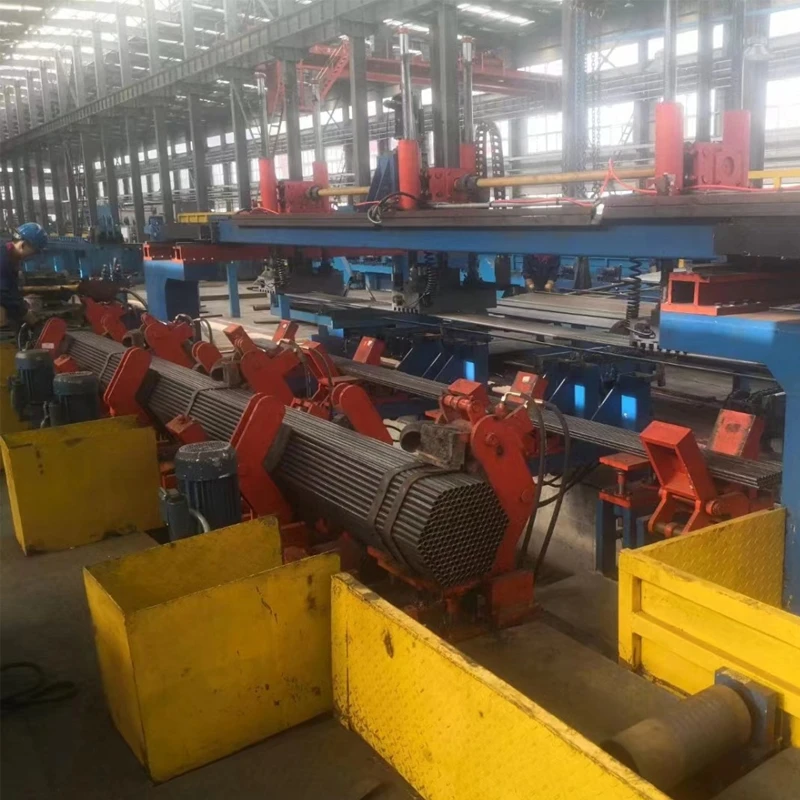Standing Seam Roof Panel Production Line Roll Forming Machinery Solutions
Understanding Standing Seam Roof Roll Forming Machines
Standing seam roofs have gained immense popularity in the construction industry due to their durability, weather resistance, and sleek aesthetics. As a result, the demand for standing seam roof roll forming machines has significantly increased. These machines are essential in the manufacturing process, allowing for efficient and precise production of roof panels. In this article, we will explore the features, benefits, and various applications of standing seam roof roll forming machines.
What is a Standing Seam Roof?
Before delving into the machinery itself, it's crucial to understand what a standing seam roof is. This type of roofing system consists of vertical panels that are seamed together at the tops, creating a series of raised seams. The seams provide protection against water infiltration while reducing panels' thermal expansion and contraction risks. This roofing style is especially popular in commercial and industrial buildings, although it's also making its way into residential construction.
Overview of Standing Seam Roof Roll Forming Machines
A standing seam roof roll forming machine is a specialized piece of equipment that converts metal coils into continuous panels of standing seam roofing. The machines are designed to perform several functions, including cutting, bending, and shaping the metal into desirable profiles. They typically consist of the following components
1. Uncoiler This is where the metal coil is mounted, allowing it to uncoil and feed into the machine.
2. Forming Stations These are multiple sets of rollers that gradually shape the metal into the standing seam profile. The number of stations can vary depending on the machine.
3. Cutting Mechanism Once the panel reaches the desired length, the cutting mechanism trims the panel to size, ensuring consistency and precision.
4. Control System Modern machines are equipped with advanced computer systems for automation, allowing operators to easily set parameters for different panel profiles and lengths.
5. Outfeed Table After the panels are cut, they are conveyed to an outfeed table, where they can be collected for further processing or shipping.
Benefits of Standing Seam Roof Roll Forming Machines
The advantages of using standing seam roof roll forming machines are numerous
standing seam roof roll forming machine

1. Customization These machines can produce panels of various sizes and profiles, catering to specific project requirements.
2. Efficiency The automated nature of these machines significantly reduces labor costs and production time, with the capability to produce long runs of panels in a short period.
3. Waste Reduction Modern roll forming technology minimizes scrap material through precise cutting and shaping, making it an environmentally friendly option.
4. Durability Panels produced by roll forming machines often have uniform thickness and strength, enhancing their performance and lifespan.
5. Less Maintenance Standing seam roofs generally require less maintenance than other roofing types, and using a roll forming machine ensures that high-quality panels are consistently produced.
Applications of Standing Seam Roof Roll Forming Machines
Standing seam roofing systems are widely used in various applications, including
1. Commercial Buildings Many businesses favor standing seam roofs for their durability and low maintenance needs, making them ideal for warehouses and retail spaces.
2. Industrial Structures Factories and manufacturing plants take advantage of standing seam roofs due to their ability to withstand harsh weather conditions.
3. Residential Homes Increased aesthetic appeal has made standing seam roofs a popular choice among homeowners, particularly in modern and energy-efficient designs.
4. Eco-Friendly Buildings The energy efficiency of standing seam roofs and their ability to incorporate insulation make them suitable for green building projects.
Conclusion
Standing seam roof roll forming machines play a vital role in the production of high-quality roofing panels that meet the demands of various sectors. Their efficiency, customizability, and durability make them an invaluable asset in any metal roofing operation. As the construction industry continues to evolve and embrace innovative solutions, standing seam roof roll forming machines will undoubtedly remain at the forefront of roofing technology, driving advancements in both efficiency and quality. If you're considering a project that involves standing seam roofing, investing in a reliable roll forming machine could prove to be a game-changer.
-
High Frequency Straight Seam Welded Pipe Production Line-BzZhou Xinghua Machinery Equipment Manufacturing Co., LTD.|Precision Welding, High EfficiencyNewsJul.30,2025
-
High Frequency Straight Seam Welded Pipe Production Line|BzZhou Xinghua|Precision Welding&EfficiencyNewsJul.30,2025
-
High Frequency Straight Seam Welded Pipe Production Line - BzZhou Xinghua|Precision Engineering&EfficiencyNewsJul.30,2025
-
High-Frequency Straight Seam Welded Pipe Production Line-BzZhou Xinghua Machinery Equipment Manufacturing Co., LTD.NewsJul.30,2025
-
High-Frequency Straight Seam Welded Pipe Production Line-BzZhou Xinghua Machinery Equipment Manufacturing Co., LTD.|Precision Manufacturing, High EfficiencyNewsJul.30,2025
-
High Frequency Straight Seam Welded Pipe Production Line-BzZhou Xinghua Machinery Equipment Manufacturing Co., LTD.|Precision Steel Pipe Manufacturing&Industrial EfficiencyNewsJul.29,2025


